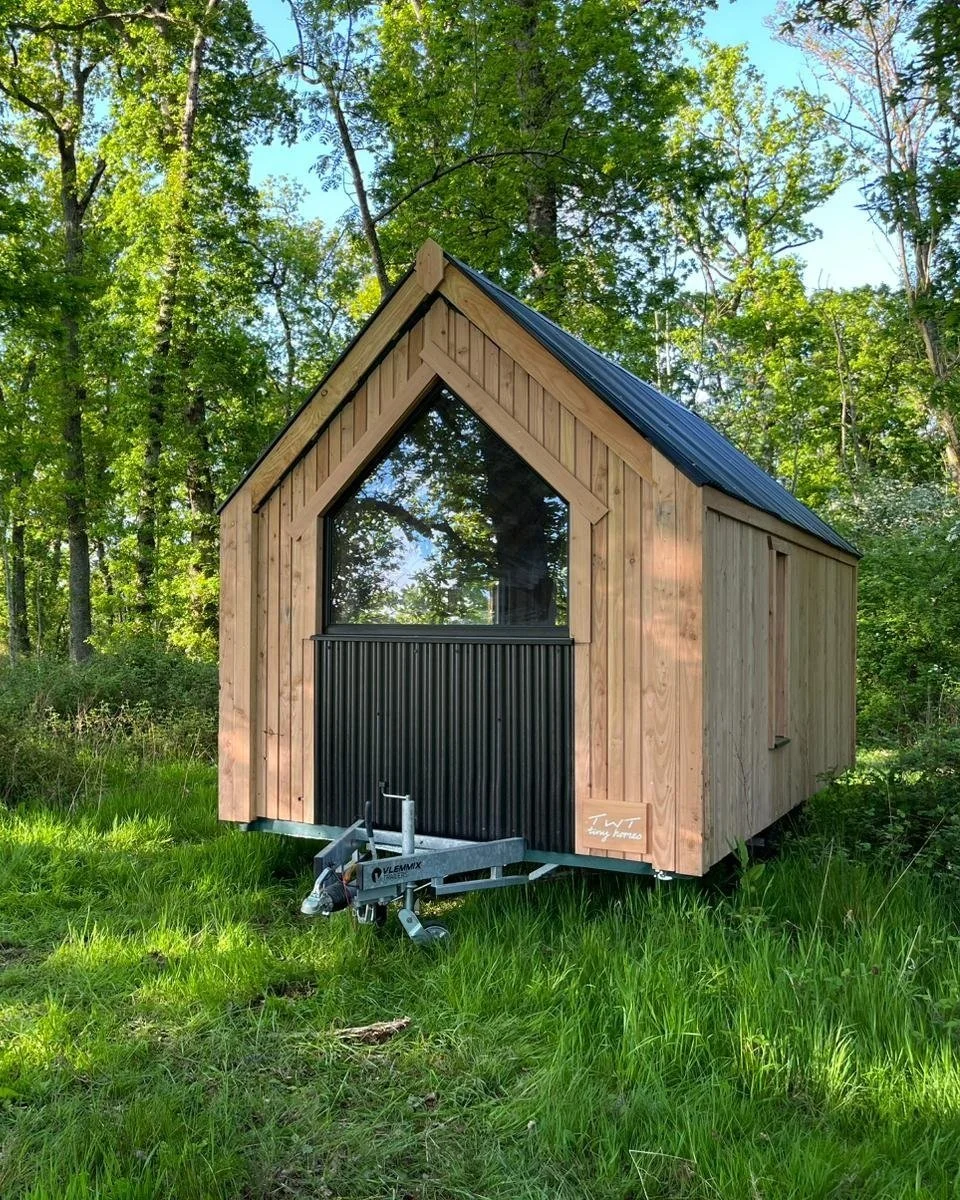
Our Materials
Sustainably Sourced Timber
We’re committed to using timber that’s as sustainable as the homes we build.
What We Use
Locally sourced from within Wales, reducing carbon emissions and supporting the local economy
Certified Grown in Britain, ensuring full traceability and responsible forest management
How It’s Processed
Air-dried when possible, with low-energy kiln drying only when necessary
No chemical treatments — we rely on natural durability and good design
Zero waste policy at the sawmill: every off-cut, shaving, and slab is reused
By choosing the right timber for the right job, we reduce environmental impact, extend the life of each build, and help grow a stronger, more circular Welsh timber economy.
Sheep’s Wool Insulation
We insulate our tiny homes with 100% natural British sheep’s wool — a renewable, high-performance material that’s as kind to the planet as it is to the people living inside.
Why We Use Wool
Non-toxic, breathable, and entirely free from harmful chemicals or irritants
It creates a safe, healthy indoor environment — ideal for long-term living, especially in small spaces where air quality matters.
Naturally Fire-Resistant
Sheep’s wool has a high ignition point (around 560°C) and doesn’t easily catch fire. It chars rather than melts or emits toxic fumes, offering an added layer of fire safety to your home.
Thermal & Acoustic Performance
Keeps your home warm in winter and cool in summer thanks to wool’s natural thermal regulation. Absorbs sound effectively for a quieter, more peaceful living space. Retains its shape and performance over time — no slumping or sagging.
Moisture Control & Breathability
Wool can absorb and release moisture without losing its insulation properties, helping regulate indoor humidity and prevent damp or condensation — ideal for compact, highly insulated spaces like tiny homes.Sustainable & Low Impact
100% renewable and biodegradable. Produced with low embodied energy. Supports ethical, regenerative farming practices in the UK.



